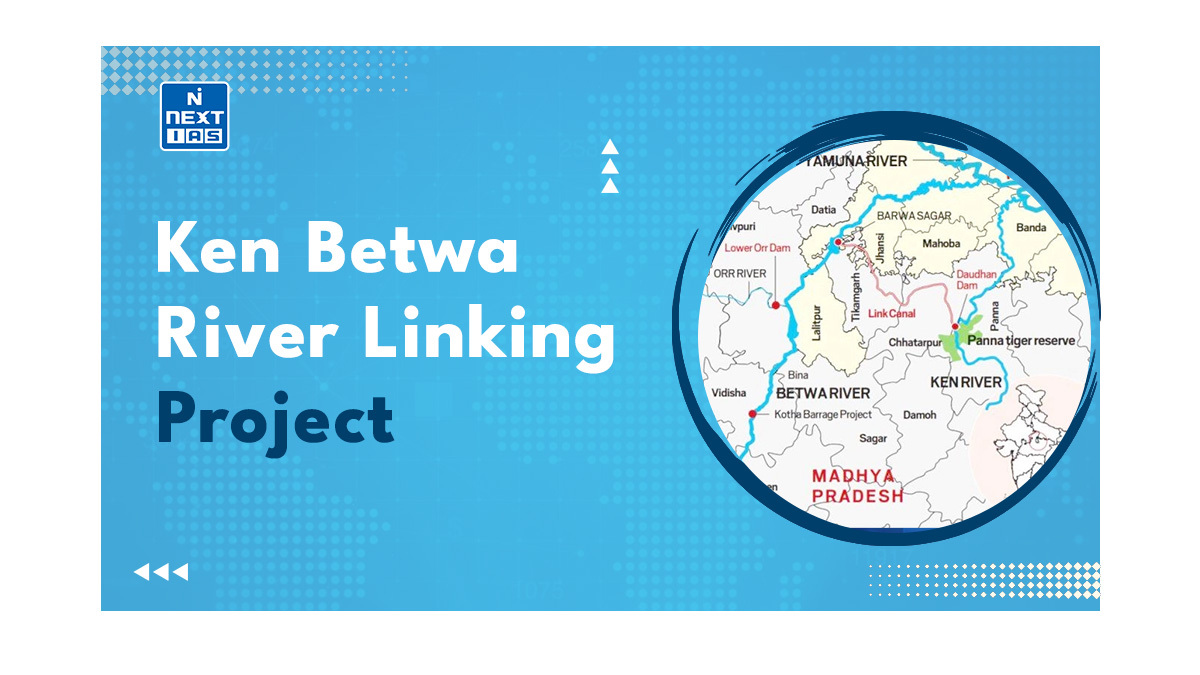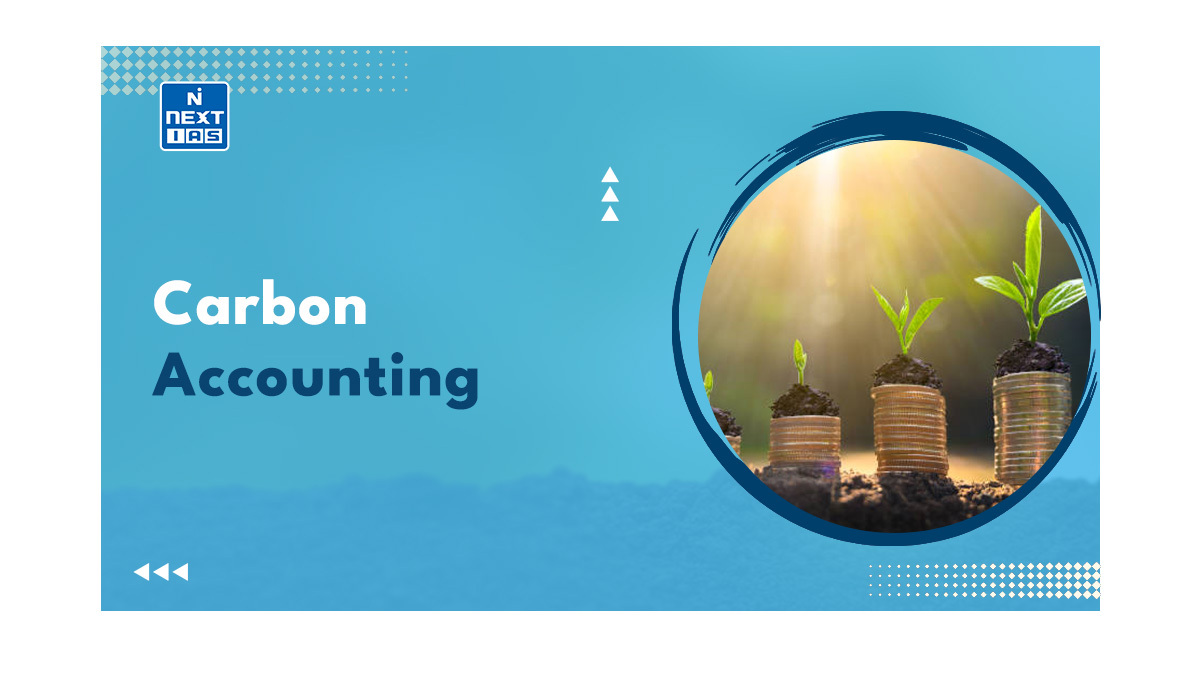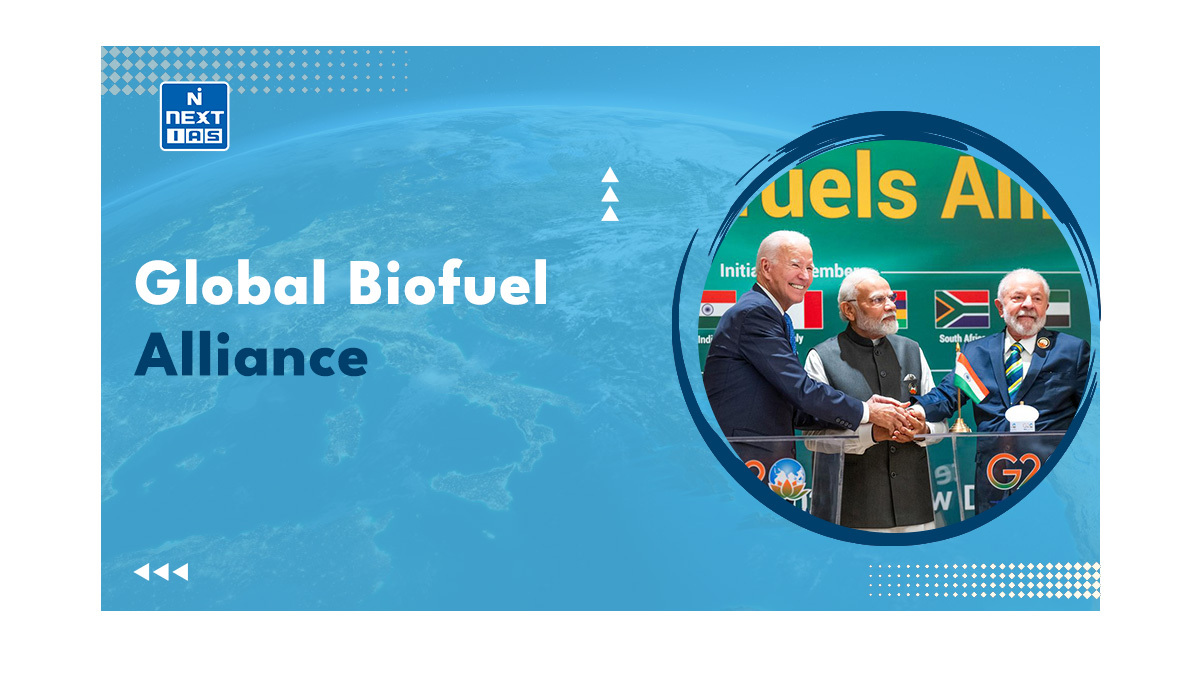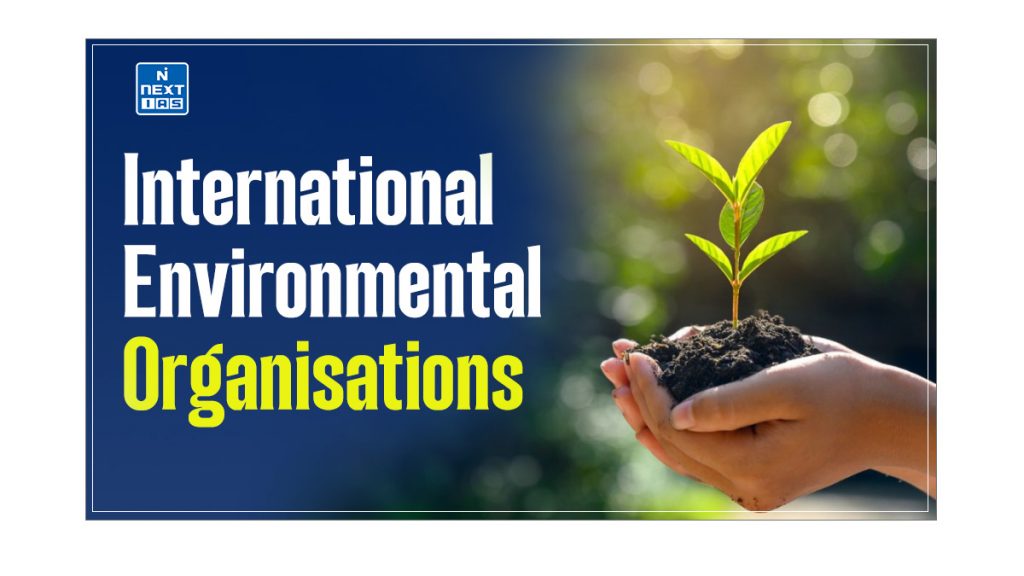
International Environmental Organisations constitute a vital component of the global environmental governance framework. Aimed at protecting and conserving the environment, these organisations play a crucial role in balancing economic growth with environmental sustainability. This article aims to study in detail the key International Environmental Organisations, their objectives, functions, programs & initiatives, and other related aspects.
Meaning of Environmental Organisations
- An Environmental Organisation is an organisation emerging out of the conservation or environmental movements that aims to protect, analyse or monitor the environment against misuse or degradation from human forces.
- The organisation may be a charity, a trust, a non-governmental organisation, a Governmental organisation or an intergovernmental organisation.
- Environmental organisations can be global, national, regional or local.
- Some environmental issues that environmental organisations focus on include pollution, resource depletion, waste, human overpopulation and climate change.
Key International Environmental Organisations
- Increasing environmental awareness has led to the establishment of a number of international environmental organisations over a period of time.
- These organisations play a critical role in addressing issues such as pollution, deforestation, climate change, and wildlife conservation.
- Some of the prominent international environmental organisations include:
- United Nations Environment Programme (UNEP)
- United Nations Development Programme (UNDP)
- Global Environment Facility (GEF)
- Intergovernmental Panel on Climate Change (IPCC)
- International Tropic Timber Organisation (ITTO)
- United Nations Forum on Forests (UNFF)
- International Union for Conservation of Nature (IUCN)
- Tropical Forest Alliance (TFA)
- International Whaling Commission (IWC)
- World Wide Fund for Nature (WWF)
- Wetland International (WI)
- BirdLife International
- Conservation International (CI)
Each of these international environmental organisations has been discussed in detail in the sections that follow.
Read our detailed article on:
United Nations Environment Programme (UNEP)
- The United Nations Environment Programme (UNEP) is an international authority focused on setting a global environmental agenda and facilitating the effective implementation of the environmental dimension of the United Nations Sustainable Development Programme.
- It is the leading international environmental organisation, shaping the global environmental agenda, promoting the coherent implementation of the environmental dimension of sustainable development within the United Nations system, and serving as an authoritative advocate for the global environment.
- Overall, it plays a critical role in addressing environmental issues at the global as well as regional levels.
- It is headquartered in Nairobi and is headed by an Executive Director.
Read our detailed article on the United Nations Environment Programme (UNEP).
United Nations Development Programme (UNDP)
- The United Nations Development Programme (UNDP) is a global network for development that promotes change and connects countries to resources, knowledge, and expertise to help people build a better life for themselves.
- The United Nations Development Programme (UNDP) provides expert advice and training.
- It also grants aid and support to developing countries, with an increasing focus on assistance to the least developed countries.
- It promotes investment and technical cooperation among nations.
- It is entirely funded by voluntary contributions from member nations.
- UNDP is central to the United Nations Sustainable Development Group (UNSDG), a network that operates in almost 170 countries and unites the 40 UN funds, programmes, specialised agencies and other bodies working to advance the 2030 Agenda for Sustainable Development.
- The UNDP is considered an executive board within the UN General Assembly (UNGA).
- The UNDP Executive Board is made up of representatives from 36 countries worldwide, who serve on a rotating basis.
Global Environment Facility (GEF)
- The Global Environment Facility (GEF) was established on the eve of the Rio Earth Summit 1992.
- It was established as a fund under the World Bank in 1991.
- The GEF is a unique partnership of 18 agencies, including the UN agencies, multilateral development banks, national entities and international NGOs.
- It works with 183 countries and other partners to address the world’s most challenging environmental issues through its strategic investments.
- The GEF Trust Funds are available to developing countries and countries with economies in transition to meet the objectives of the international environmental agreements and conventions.
- The GEF has a large network of Civil Society Organisations (CSOs), works closely with the private sector worldwide, and receives continuous inputs from an independent evaluation office and a world-class scientific panel.
- The institutional structure of the Global Environment Facility (GEF) can be seen as follows:
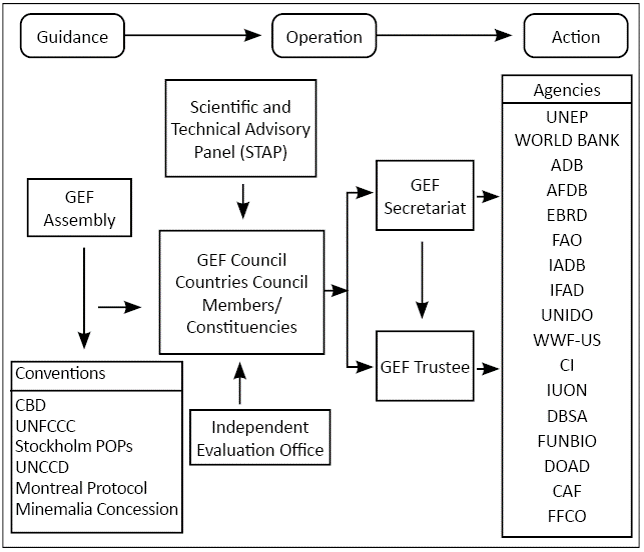
- It serves as a financial mechanism for five major international environmental conventions:
- Minamata Convention on Mercury,
- Stockholm Convention on Persistent Organic Pollutants (POPs),
- United Nations Convention on Biological Diversity (UNCBD),
- United Nations Convention to Combat Desertification (UNCCD), and
- United Nations Framework Convention on Climate Change (UNFCCC).
- GEF is also an INNOVATOR AND CATALYST that supports multi-stakeholder alliances to preserve threatened ecosystems, boost food security, build greener cities, and promote clean energy for a more prosperous, climate-resilient world.
Intergovernmental Panel on Climate Change (IPCC)
- The Intergovernmental Panel on Climate Change (IPCC) is an international body that assesses the science related to climate change.
- It was established by the United Nations Environment Programme (UNEP) and the World Meteorological Organisation (WMO) in 1988 to provide policymakers with regular assessments of the scientific basis of climate change, its impacts and future risks, and options for mitigation and adaptation.
- IPCC assessments provide a scientific basis for Governments at all levels to develop climate-related policies, and they underlie negotiations at the UN Climate Conference – the United Nations Framework Convention on Climate Change (UNFCCC).
International Tropic Timber Organization (ITTO)
- ITTO was established under the aegis of the United Nations in 1986 amidst increasing global concern for the fate of tropical forests.
- ITTO is an inter-governmental international environmental organisation that promotes the conservation and sustainable management, use and trade of tropical forest resources.
- The treaty promotes sustainable development through tropical forest management, tropical forest conservation, and a sustainable tropical timber trade.
- The ITTO has 73 members, which are divided into two groups:
- Producer countries (35 members)
- Consumer countries (38 members), including the European Union.
- ITTO develops internationally agreed policy documents to promote sustainable forest management and forest conservation and assists tropical member countries to adapt such policies to local circumstances and to implement them in the field through projects.
- Examples include pilot and demonstration projects, human resource development projects, and research and development projects.
- ITTO collects, analyses and disseminates data on the production and trade of tropical timber and also funds a range of projects and other actions aimed at developing industries at both community and industrial scales
- It facilitates funding for forestry projects in tropical timber producing countries. These projects include activities in forest management, reforestation, forest industry and markets.
United Nations Forum on Forests (UNFF)
- The UN Forum on Forests is an intergovernmental body to strengthen political commitment and action. UNFF was established by The Economic and Social Council of the United Nations (ECOSOC), in October 2000, as a subsidiary body.
- Major objectives of the United Nations Forum on Forests (UNFF) are as follows:
- Promote the management, conservation and sustainable development of all categories of forests and tree lands.
- Strengthen and enhance long-term political and financial commitment based on the Rio Declaration, the Forest Principles, Chapter 11 of Agenda 21 and the outcome of the Intergovernmental Panel on Forests (IPF).
- To enhance the contribution of forests to the achievement of the internationally agreed development goals like the Millennium Development Goals and Sustainable Development Goals.
- The Forum has the universal membership, and it consists of all Member States of the UN and specialized agencies.
- The Special Session of the UN Forum on Forests, 2017 adopted the recommendations of the Working Group of the Forum, which featured the first-ever UN Strategic Plan for Forests 2017-2030.
International Union for Conservation of Nature (IUCN)
- The International Union for Conservation of Nature (IUCN) is an international environmental organisation dedicated to the conservation of nature and sustainable use of natural resources.
- It is a membership Union that is uniquely composed of both Government and Civil Society Organisations (CSOs).
- It provides public, private and Non-Governmental Organisations (NGOs) with the tools and knowledge that enable nature conservation, economic development and human progress to take place together.
- Established in 1948, IUCN has evolved into the world’s largest and most diverse environmental network by harnessing the experience, resources and reach of its 1,300 Member organisations.
- It is the global authority on the status of nature and the measures needed to safeguard it.
Read our detailed article on the International Union for Conservation of Nature (IUCN).
Tropical Forest Alliance (TFA)
- The Tropical Forest Alliance 2020 was founded in 2012 at Rio+20.
- It is a Public Private Partnership (PPP) in which partners take voluntary actions, individually and in combination, to reduce the tropical deforestation associated with the sourcing of commodities such as soy, palm oil, beef, and paper and pulp.
- The Alliance does so by tackling the drivers of tropical deforestation using a range of policy, market, and communications approaches.
- This project is part of the World Economic Forum‘s Shaping the Future of Global Public Goods Platform.
- TFA is funded by the Governments of the United Kingdom, Norway, and the Netherlands.
- Its secretariat is hosted at the World Economic Forum.
Aims and Objectives of Tropical Forest Alliance (TFA)
- TFA 2020 will contribute to mobilising and coordinating actions by Governments, civil society, and the private sector to reduce tropical deforestation related to key agricultural commodities by 2020.
- It aims to realise sustainable rural development and better growth opportunities based on reduced deforestation in tropical forest countries.
- It aims to halve deforestation by 2020 and end it by 2030.
Goals of Tropical Forest Alliance (TFA)
- Improve planning and management related to tropical forest conservation, agricultural land use and land tenure.
- Share best practices for tropical forest and ecosystem conservation and commodity production, including working with smallholder farmers and other producers on sustainable agricultural intensification, promoting the use of degraded lands and reforestation.
- Provide expertise and knowledge in order to assist with the development of commodity and processed-commodity markets that promote the conservation of tropical forests.
- Improve monitoring of tropical deforestation and forest degradation to measure progress.
International Whaling Commission (IWC)
- The International Whaling Commission is an inter-governmental international environmental organisation that aims to conserve whales and manage whaling.
- The legal framework of this Commission is the International Convention for the Regulation of Whaling.
- This convention was established in 1946, making it one of the first international environmental legislation.
- IWC have current membership of 88 Governments for all over the world and the member countries are signatories to this commission.
- The preamble to the Convention states that its purpose is to provide for the proper conservation of whale stocks and thus make possible the orderly development of the whaling industry.
- The Convention includes a legally binding schedule.
- The Schedule is an integral part of the Convention, but its provisions, for example catch limits, may be amended by the Commission.
- In practice, amendments to the Schedule are almost always agreed at the Commission’s biennial meetings.
- The Commission has also adopted a ‘Strategic Plan for Whale Watching’ to facilitate the further development of this activity in a way which is responsible and consistent with international best practice.
- The Commission also undertakes extensive study and research on cetacean populations (aquatic mammals like Whales, Dolphins, Porpoises), develops and maintains scientific databases, and publishes its own peer reviewed scientific journal, the Journal of Cetacean Research and Management.
Whale Research Programmes of International Whaling Commission
IWC Southern Ocean Whale and Ecosystem Research Programme (IWC-SOWER)
IWC Southern Ocean Whale and Ecosystem Research Programme (IWC-SOWER) cruises were conducted annually for over 30 years (1979-2009) and provided extensive information on a variety of cetaceans.
IWC Pacific Ocean Whale and Ecosystem Research Programme (IWC-POWER)
- The IWC Pacific Ocean Whale and Ecosystem Research Programme (IWC-POWER) is an international effort coordinated by the IWC.
- The cruises focus on the North Pacific Ocean and particularly little-studied areas, some of which have yet to be surveyed for 40 years.
- This is a long-term programme that is expected to run for more than ten years.
World Wide Fund for Nature (WWF)
- The World Wide Fund for Nature (WWF) is an international non-profit organisation dedicated to the preservation and conservation of nature and its different species.
- It is the world’s biggest conservation organisation.
- It supports more than 1000 projects all over the world.
Focal Domains of World Wide Fund for Nature (WWF)
- WWF primarily works in the areas of climate, food, forests, freshwater, oceans, and wildlife.
- It runs several projects in various fields in partnership with people, bodies and Governments worldwide.
- In species conservation, they focus on tigers, elephants, gorillas, giant pandas, sea turtles, polar bears, rhinos and whales.
- Through its various projects, the organisation aims to check the degradation of the earth’s natural environment and create a future in which human beings live in harmony with nature.
- Campaigns launched by WWF include Earth Hour and Debt-for-Nature Swap.
- The famous ‘Living Planet Report’ (started in 1998) is published by the WWF every two years in which the health of the planet and the impact of human activities on nature are talked about.
Wetland International (WI)
- Wetlands International is an international environmental organisation that works to sustain and restore wetlands and their resources for people and biodiversity.
- It is a not-for-profit, independent, global organisation, supported by Government and NGO members from across the world.
- Primarily based in the developing world, it has 20 regional, national or project offices in all continents and a head office in Ede, the Netherlands.
Read our detailed article on the Wetlands International (WI).
BirdLife International
- BirdLife International is a global partnership of conservation organisations that aims to conserve birds, their habitats, and global biodiversity, working with people to promote sustainability in the use of natural resources.
- It is the world’s largest conservation partnership for the conservation of birds and their habitats.
- It was earlier known as the International Committee for Bird Preservation.
- Its global office is in the UK with six regional offices – Asia, Africa, the Americas, Europe and Central Asia, the Middle East and the Pacific.
- It is the official Red List authority for birds, for the IUCN’s Red List of Threatened Species.
- It publishes World Birdwatch, a quarterly magazine, which contains recent news and authoritative articles about birds, their habitats, and their conservation around the world.
- It also published the Important Bird and Biodiversity Areas (IBA) inventory.
Important Bird and Biodiversity Areas (IBA)
- Important Bird and Biodiversity Areas (IBA) is an area identified using an internationally agreed set of criteria.
- These areas are globally important for the conservation of bird populations.
- The sites are identified by BirdLife International.
- Initially, IBAs were identified only for terrestrial and freshwater environments, but over the last decade, the IBA process and method have been adapted and applied in the marine realm.
- In 2012, BirdLife published the first Marine IBA “e-atlas”, which contains the details of 3,000 IBAs in territorial and coastal waters as well as on the high seas.
- Legal protection for birds in these areas is provided only if they become part of already protected areas, so there is no special legal protection on being identified as an IBA.
- To be listed as an IBA, a site must house bird species that are either endemic to that area or are crucial to the survival of some bird species with restricted range.
| BOMBAY NATURAL HISTORY SOCIETY (BNHS) – It is a pan-India wildlife research organisation and has been promoting the cause of nature conservation since 1883. – It is the partner of BirdLife International in India. – Mission: Conservation of nature, primarily biological diversity, through action based on research, education and public awareness – Vision: Premier independent scientific organisation with a broad-based constituency, excelling in the conservation of threatened species and habitats. – The Wetland Research and Training Centre of Chilika Development Authority (CDA), an avifauna observatory at Chandraput, will house the first regional centre of the Bombay Natural History Society (BNHS). |
Conservation International (CI)
- Conservation International (CI) is a non-profit, private international environmental organisation dedicated to saving the world’s endangered rainforests and the plants and animals that rely on these habitats for survival.
- CI is basically a scientific organization, a fact which distinguishes it from other conservation groups. Its staff includes leading scientists in the fields of botany, ornithology, herpetology, marine biology, entomology, and zoology.
- Many CI programs focus on building local capacity for conservation in developing countries through the financial and technical support of local communities, private organisations, and government agencies.
- CI also funds and provides technical support to local communities, private organisations, and government agencies to help build sustainable economies while protecting rainforest ecosystems.
- Four broad themes that underlie all the CI projects are:
- Focus on entire ecosystems.
- Integration of economic interests with ecological interests.
- Creation of a base of scientific knowledge necessary to make conservation-minded decisions.
- Efforts to make it possible for conservation to be understood and implemented at the local level.
Conclusion
International Environmental Organisations play a crucial role in addressing diverse and pressing environmental challenges worldwide. Through their efforts in awareness, advocacy, research, and on-ground conservation, these organisations contribute significantly to the protection and preservation of world’s natural heritage. Continued support, collaboration, and innovation for strengthening these international environmental organisations will be essential for advancing environmental sustainability and ensuring a healthier future.
Frequently Asked Questions (FAQs)
What was the first international environmental organisation?
The International Union for the Protection of Nature (IUPN), now the International Union for Conservation of Nature (IUCN), is considered to be the first international environmental organisation. It was established in 1948.
What is the world’s largest environmental organisation?
The World Wildlife Fund (WWF) is generally considered the largest international environmental organisation. It has a global presence, working in over 100 countries to conserve nature and reduce threats to biodiversity.



